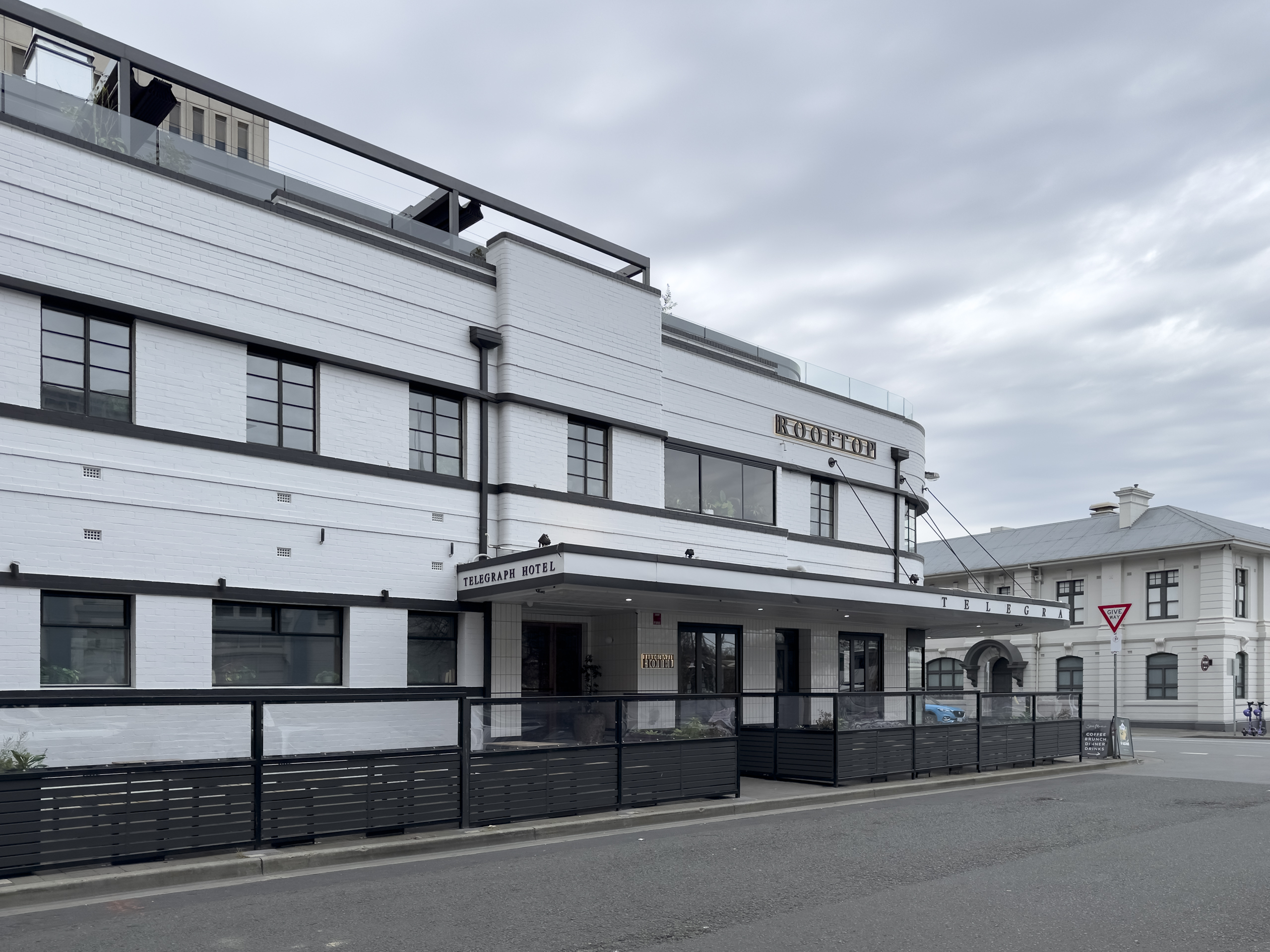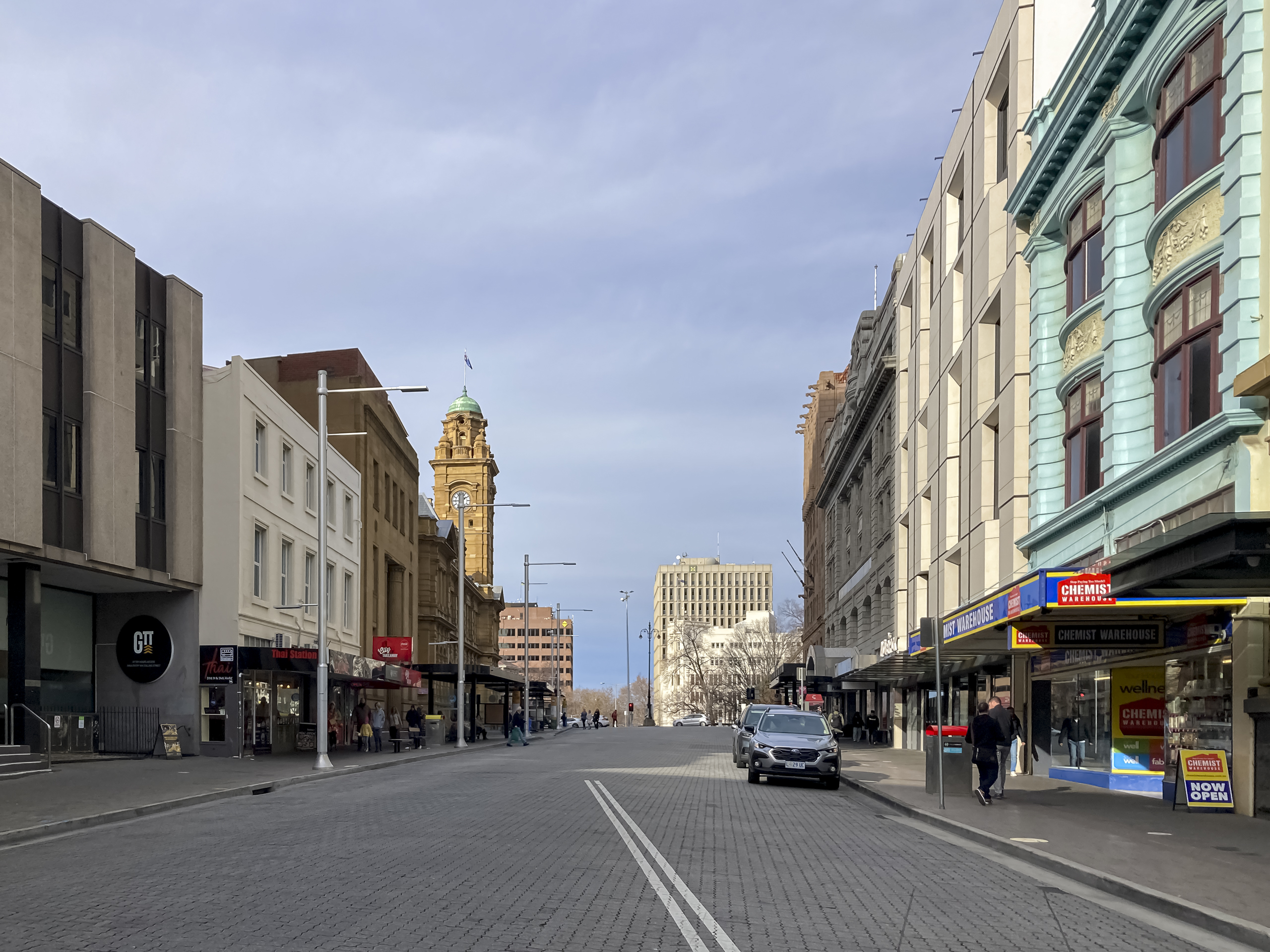Week 39/2024: Deco Tuesday
Week of 23 September 2024
This was a busy week leading up to school holidays.
Art Deco in Hobart
Deco Tuesday
On Tuesday I went with a group from the Friends of the Theatre Royal on a tour of Hobart’s art deco architecture. Led by FOTR’s Moya Deigan, a former convenor of the Art Deco Society, this was a 90-minute walking tour around some of Hobart’s well (and less well)-known buildings from the art deco period.
Art deco is a style that seems easy to recognise, but it’s elusive to define because of its complexity and the range of sources it draws from. Although in its strictest sense, Art Deco is a French style of art that appeared between 1900 and the late 1920s, its appearance in architecture extended to the years between the world wars, and in Tasmania, even later than that.
To begin the morning, Moya gave us a flyer from a 2001 art deco exhibition, which provided an overview of the style in Tasmania and some examples, mostly from Hobart.

The brochure explains that art deco is a style of the modern age (that is, the early to mid-20th century) that borrows elements from areas as diverse as German modernism, Gothic architecture, ocean liners, trains, Egypt, the Classical tradition . . . and the list goes on. It is ”unified by elements that express power, energy and dynamism”, underpinned by a “confidence in the machine age; a celebration of machines, industrial products, energy and speed”.
HEC Building
The tour started at one of Hobart’s best-known examples of the style, the Hobart Council Centre.

Designed by A. & K. Henderson of Melbourne, this building started life as the headquarters for the Hydro Electric Commission (HEC). It was intended to be a showcase for the wonders of hydroelectricity. Its features included the neon tube lighting on the facade which was, in the day, apparently quite a spectacle when it was lit up.
You can still see the elements that paid homage to electricity such as the stylised electrical insulators near the top of the facade.

Cascade’s hotels
Moving around the corner to the Telegraph Hotel, we learned that this was one of a number of hotels owned by Cascade Brewery.

Back in the 1930s and 40s, Cascade undertook a ‘modernisation’ program of its hotels to bring them into the 20th century and, presumably, make them more attractive to would-be punters. So some of these old 19th century pubs got the art deco treatment. This includes the Telegraph (in 1940), the Shamrock in Harrington Street, and the Ocean Child in Argyle Street.
Substation
From there, we moved up Murray Street to look at the substation on the corner. Moya explained that this was built in the 1930s, and there was great outcry because people objected to a modern structure being ‘plonked’ in front of the Georgian buildings of the Treasury.

Some things never change.
But Moya pointed out even though it’s a modernist building, the designers tried to reflect some of the elements of the surrounding buildings. Consequently, there’s a much greater appreciation for it now.
Deco across the city

We took in a range of buildings across the city, from Lauriston Crisp’s Freemasons Temple on Sandy Bay Road, to the Shamrock Hotel in Liverpool Street.

Walking down Liverpool Street, we passed what I and others of my vintage may remember (or may not, but we won’t go there) as the Cadillac Club, a building that no one seems to know anything about.

We also visited the Royal Hobart Hospital, which is no longer the deco glory it once was.

Commonwealth Bank
Our final stop was at the former Commonwealth Bank building in the bus mall. This was really exciting because I had no idea this is likely Hobart’s first deco building.

Built in 1935, it must have been amazing when it was the bank. Inside the op shop that it houses now, there’s photos of what the interior looked like, and some of the original features still exist today.
Moya said it was designed by E H Henderson, who worked for the Commonwealth Government Department of Works and Services. The building was controversial at the time (who would have thought). Apparently it was described in the Mercury as a cross between a mausoleum, a synagogue and a jail! But, unusually for art deco, it’s made of sandstone, which was intended to be respectful of the surrounding buildings, such as the GPO.
I’d never really paid it much attention and I don’t have any photos of it other than streetscapes. I guess I never noticed it because it’s sandstone and because it really does fit in—and photographing it is difficult because there’s a great big bus shelter out the front . . .

But now I know this, I need to explore it some more!
So that was my fabulous Tuesday. Thanks to Moya and FOTR for organising the tour.
(I know this post is probably more suited to my photo blog, but it’s here now. I’ll post photos of other buildings we saw on the tour on there when I get a chance.)
Go West!
It was a busy weekend.
Kramstable’s 18th birthday party was on Saturday night, then we got on a plane for our long-awaited holiday to Western Australia on Sunday afternoon.
You can expect a mix of travel blog posts and regular weekly updates while I try to catch up on the 2000+ photos I made on the trip.
Week 39 summary
Habit tracker
This was week 2 of my new habit tracking to keep myself accountable for my exercise program. I’m still tweaking it from last week. Next week will be messed up because we’ll be away, but this week I mostly stuck to the plan.
- 2 walks or bike rides or a combination (6 days): 6/6
- Long walk (1 day): 1/1
- 15 minutes exercise sequence in the morning: 4/7
- Walk 8,000 steps: 7/7
- Evening sequence: 3/7
- 9.00 shutdown (4 days): 3/4 (Wednesday is acting, Saturday was the party, Sunday we were travelling)
What was the best thing about this week?
Kramstable’s 18th birthday party.
What did I notice this week?
Walking on Davey Street past one of the entrances to St David’s Park, I noticed the foundation stone for the park had the name EG Luckman engraved.

Two questions.
Who is EG Luckman, and why have I never noticed this before? (All I can find in an admittedly quick google search is that Mr Luckman has also erected a war memorial in Woodbridge in 1919.)
What did I learn this week?
From the art deco tour I learned that the sculptor Ola Cohn made some statues for out front of the Royal Hobart Hospital in 1938. These are absorbed into the redevelopment now.

Miss Cohn is best known for the Fairies Tree in Fitzroy Gardens.
What am I reading?
- Meditations for Mortals by Oliver Burkeman
- The Good Ally by Nova Reid